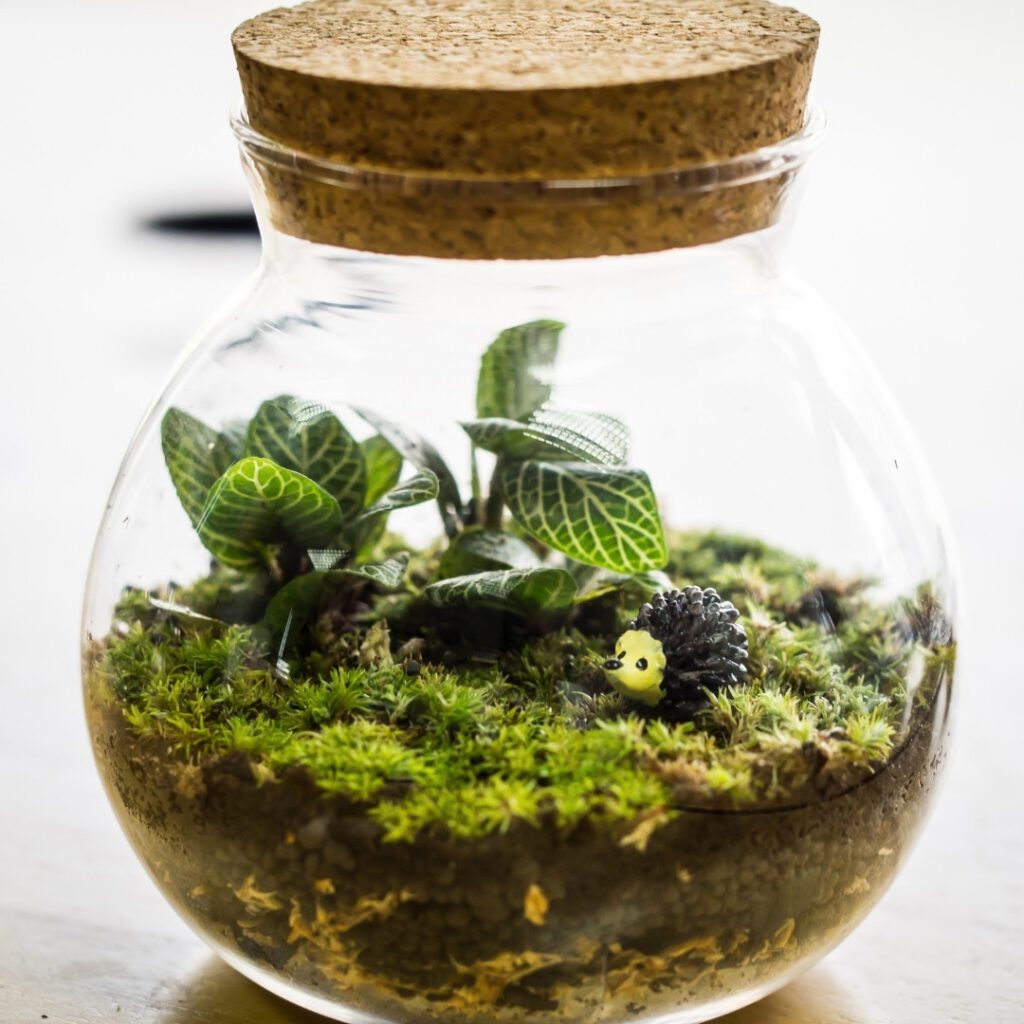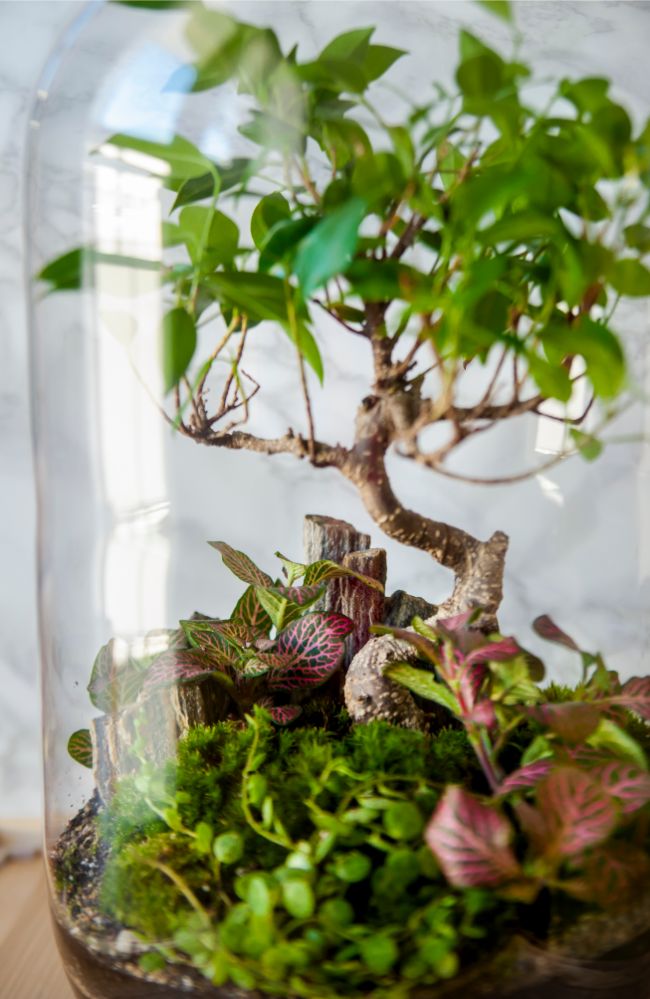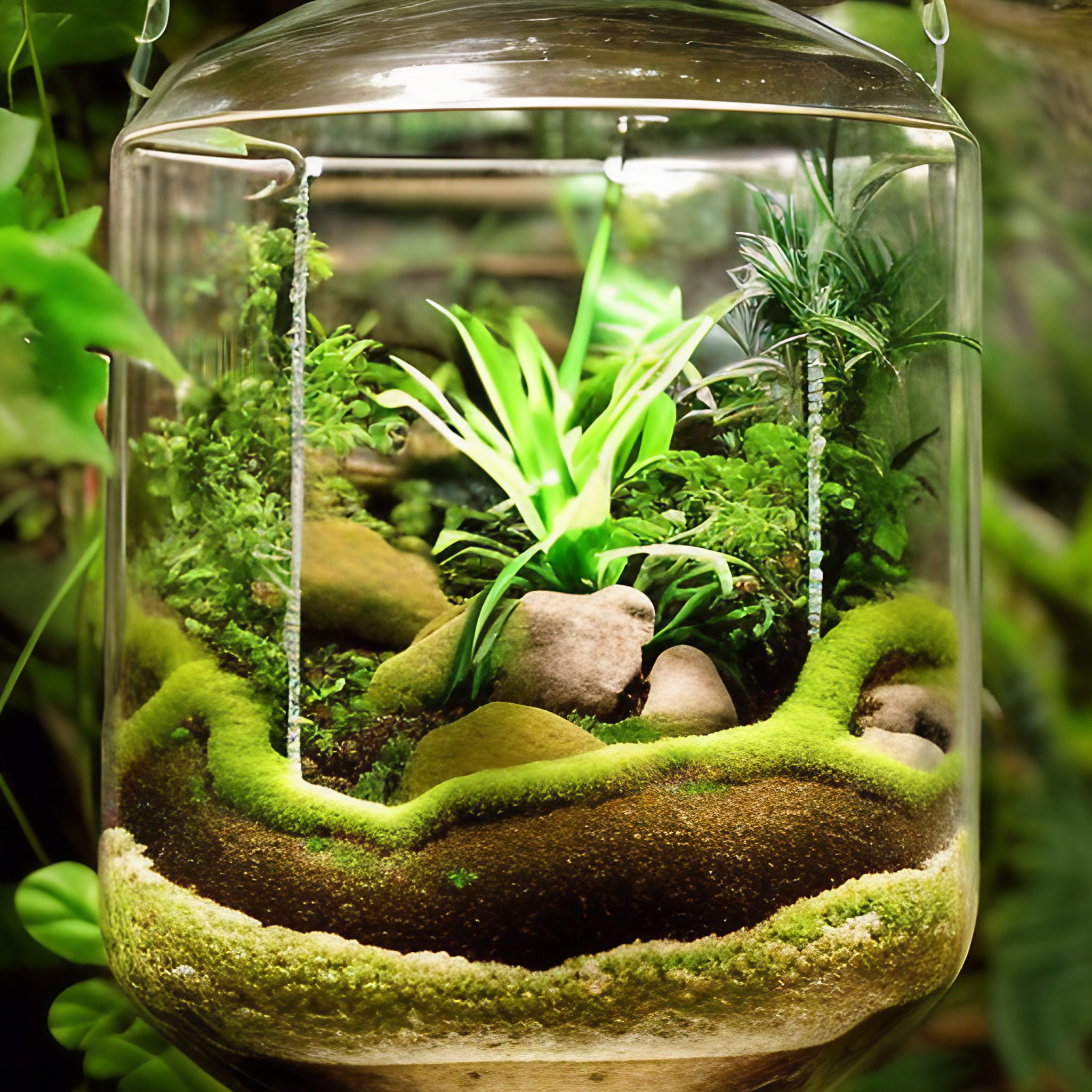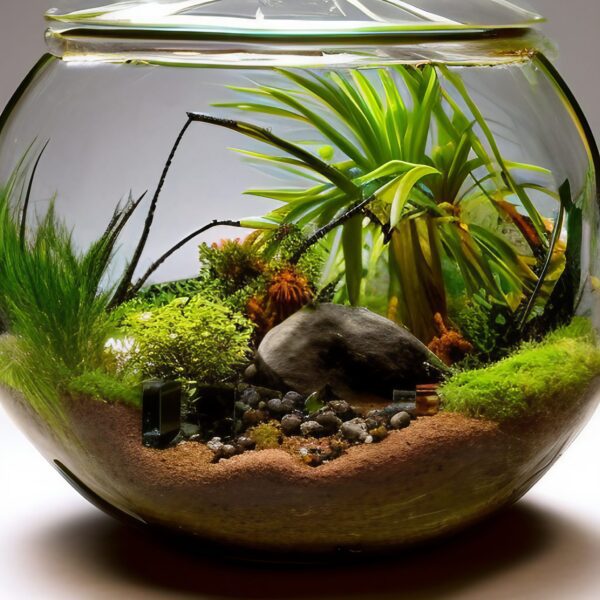What Makes a Plant Suitable for a Closed Terrarium?
Closed terrariums are unique environments that require plants to thrive in conditions with low light, high humidity, and limited air circulation. When selecting plants for a closed terrarium, it’s essential to consider these factors to ensure the plants will flourish. Good plants for closed terrariums typically possess characteristics that enable them to tolerate these conditions, such as slow growth rates, low light requirements, and the ability to thrive in humid environments.
One of the primary considerations when choosing plants for a closed terrarium is their ability to tolerate low light levels. Many plants that thrive in closed terrariums have adapted to survive in low-light conditions, such as Chinese Evergreen and Pothos. These plants have evolved to photosynthesize efficiently in low-light environments, making them ideal for closed terrariums.
High humidity is another critical factor to consider when selecting plants for a closed terrarium. Plants that thrive in humid environments, such as Ferns and Peace Lilies, are well-suited for closed terrariums. These plants have adapted to survive in humid conditions and can tolerate the high moisture levels found in closed terrariums.
Limited air circulation is also a crucial factor to consider when choosing plants for a closed terrarium. Plants that require good air circulation, such as Cacti and Succulents, may not thrive in closed terrariums. Instead, plants that can tolerate stagnant air, such as Air Plants and Tillandsia, are better suited for these environments.
By considering these factors, you can select plants that are well-suited for a closed terrarium and will thrive in these unique environments. Good plants for closed terrariums are those that can tolerate low light, high humidity, and limited air circulation, making them ideal for these self-sustaining ecosystems.
How to Select Plants for a Closed Terrarium: Key Considerations
When selecting plants for a closed terrarium, there are several key considerations to keep in mind. One of the most important factors is plant size. Choosing plants that are too large for the terrarium can lead to overcrowding and reduced air circulation, which can negatively impact plant growth. On the other hand, selecting plants that are too small may result in a terrarium that looks sparse and uninteresting.
Growth rate is another critical factor to consider when selecting plants for a closed terrarium. Plants with fast growth rates may quickly outgrow the terrarium, requiring frequent pruning or replacement. In contrast, plants with slow growth rates may be better suited for closed terrariums, as they will require less maintenance and can thrive in the terrarium’s unique environment.
Moisture requirements are also an essential consideration when selecting plants for a closed terrarium. Plants that require high levels of moisture may thrive in the humid environment of a closed terrarium, while plants that prefer dry conditions may struggle. By selecting plants with similar moisture requirements, you can create a balanced and thriving ecosystem within the terrarium.
In addition to these factors, it’s also important to consider the growth habits and space requirements of the plants you select. For example, plants that spread quickly or have a trailing habit may be better suited for a larger terrarium, while plants that grow upright or have a compact habit may be better suited for a smaller terrarium.
By considering these key factors, you can select plants that are well-suited for a closed terrarium and will thrive in its unique environment. Good plants for closed terrariums are those that are carefully selected to meet the specific conditions of the terrarium, and can provide a beautiful and thriving display for years to come.
Low-Maintenance Options: Plants that Flourish in Closed Terrariums
When it comes to choosing plants for a closed terrarium, it’s essential to select species that are low-maintenance and can thrive in the unique conditions of the terrarium. Some of the best plants for closed terrariums are those that are adapted to low-light conditions, high humidity, and limited air circulation.
Chinese Evergreen is a popular choice for closed terrariums due to its ability to tolerate low light and high humidity. This plant is also known for its attractive leaves, which come in a variety of colors and patterns. Chinese Evergreen is a low-maintenance plant that requires minimal care, making it an ideal choice for busy people or those new to terrarium gardening.
Pothos is another low-maintenance plant that thrives in closed terrariums. This plant is known for its ability to grow in a variety of lighting conditions, from low to bright light. Pothos is also a great air purifier, making it a popular choice for indoor gardens. In a closed terrarium, Pothos can grow quite vigorously, so it’s essential to prune it regularly to maintain its shape.
Peperomia is a small, compact plant that is perfect for closed terrariums. This plant comes in a variety of colors and patterns, and is known for its beautiful leaves. Peperomia is a low-maintenance plant that requires minimal care, making it an ideal choice for those new to terrarium gardening.
These plants are all great options for closed terrariums due to their ability to thrive in low-light conditions, high humidity, and limited air circulation. By choosing low-maintenance plants like these, you can create a beautiful and thriving terrarium that requires minimal care. Good plants for closed terrariums are those that are adapted to the unique conditions of the terrarium, and can provide a beautiful display for years to come.
Adding Visual Interest: Plants with Unique Textures and Colors
Closed terrariums are not just about functionality, but also about aesthetics. Adding plants with unique textures and colors can elevate the visual interest of your terrarium and create a stunning display. When selecting plants for your closed terrarium, consider incorporating species with interesting foliage, flowers, or growth habits.
Air Plant, also known as Tillandsia, is a great example of a plant that can add visual interest to your closed terrarium. This epiphyte has no roots and absorbs moisture and nutrients through its leaves, making it a unique and fascinating addition to any terrarium. Air Plants come in a variety of shapes, sizes, and colors, and can be attached to rocks, driftwood, or other decorative elements to create a stunning display.
Bromeliad is another plant that can add a pop of color and texture to your closed terrarium. This tropical plant produces vibrant flowers and has striking foliage, making it a great choice for adding visual interest to your terrarium. Bromeliad is also relatively low-maintenance and can thrive in low-light conditions, making it a great choice for closed terrariums.
Tillandsia, also known as Air Plant, is a great choice for adding unique texture and color to your closed terrarium. This epiphyte has no roots and absorbs moisture and nutrients through its leaves, making it a fascinating addition to any terrarium. Tillandsia comes in a variety of shapes, sizes, and colors, and can be attached to rocks, driftwood, or other decorative elements to create a stunning display.
By incorporating plants with unique textures and colors, you can create a visually stunning closed terrarium that is both functional and beautiful. Good plants for closed terrariums are those that not only thrive in the unique conditions of the terrarium, but also add visual interest and beauty to the display.
Creating a Balanced Ecosystem: Combining Plants for a Thriving Terrarium
Creating a balanced ecosystem in a closed terrarium is crucial for the health and well-being of the plants. When selecting plants for your terrarium, it’s essential to consider their growth habits, moisture requirements, and light needs to ensure that they complement each other. By combining plants with different characteristics, you can create a thriving ecosystem that is both visually appealing and sustainable.
One way to create a balanced ecosystem is to combine plants with different growth habits. For example, you can pair a tall, upright plant like a Bromeliad with a low-growing, spreading plant like a Peperomia. This will create a visually interesting display and ensure that the plants are not competing for space or resources.
Another way to create a balanced ecosystem is to combine plants with different moisture requirements. For example, you can pair a plant that prefers high humidity like a Fern with a plant that prefers low humidity like a Cactus. This will create a balanced environment that meets the needs of both plants.
When combining plants, it’s also essential to consider their light needs. For example, you can pair a plant that prefers low light like a Chinese Evergreen with a plant that prefers bright light like a Bromeliad. This will create a balanced environment that meets the needs of both plants.
Some examples of plant combinations that work well together include:
– Chinese Evergreen and Peperomia: These plants have similar moisture requirements and can thrive in low-light conditions.
– Bromeliad and Fern: These plants have different moisture requirements, but can thrive in a balanced environment with moderate humidity.
– Cactus and Succulent: These plants have similar moisture requirements and can thrive in bright, dry conditions.
By creating a balanced ecosystem in your closed terrarium, you can ensure that your plants thrive and create a visually appealing display. Good plants for closed terrariums are those that are carefully selected to meet the specific conditions of the terrarium, and can provide a beautiful and sustainable display for years to come.
Popular Closed Terrarium Plants: Reviews and Recommendations
When it comes to choosing plants for a closed terrarium, there are many popular options to consider. In this section, we’ll review and recommend some of the most popular closed terrarium plants, including their pros and cons, and provide examples of successful terrariums featuring these plants.
One of the most popular closed terrarium plants is the Chinese Evergreen. This plant is known for its attractive leaves and ability to thrive in low-light conditions, making it a great choice for closed terrariums. Chinese Evergreen is also relatively low-maintenance and can tolerate a range of temperatures and humidity levels.
Another popular closed terrarium plant is the Pothos. This plant is known for its trailing vines and ability to thrive in a range of lighting conditions, making it a great choice for closed terrariums. Pothos is also relatively low-maintenance and can tolerate a range of temperatures and humidity levels.
The Peperomia is also a popular closed terrarium plant, known for its small, compact leaves and ability to thrive in low-light conditions. This plant is relatively low-maintenance and can tolerate a range of temperatures and humidity levels, making it a great choice for closed terrariums.
Some other popular closed terrarium plants include the Air Plant, Tillandsia, and Bromeliad. These plants are known for their unique textures and colors, and can add visual interest to a closed terrarium. They are also relatively low-maintenance and can tolerate a range of temperatures and humidity levels.
When choosing plants for a closed terrarium, it’s essential to consider their specific needs and requirements. By selecting plants that are well-suited to the conditions of the terrarium, you can create a thriving and sustainable ecosystem. Good plants for closed terrariums are those that are carefully selected to meet the specific conditions of the terrarium, and can provide a beautiful and sustainable display for years to come.
Terrarium Plant Care 101: Tips for Maintaining a Healthy Environment
Caring for plants in a closed terrarium requires attention to detail and a understanding of the unique conditions of the terrarium. In this section, we’ll provide tips and advice on how to care for plants in a closed terrarium, including watering, fertilizing, and pruning.
Watering is one of the most critical aspects of terrarium plant care. Overwatering can lead to root rot and other problems, while underwatering can cause plants to become stressed and weakened. To avoid these problems, it’s essential to water your terrarium plants carefully, making sure not to overwater or underwater.
Fertilizing is also an important aspect of terrarium plant care. Fertilizers provide essential nutrients that plants need to grow and thrive. However, it’s essential to use fertilizers sparingly, as overfertilizing can cause more harm than good.
Pruning is another important aspect of terrarium plant care. Pruning helps to maintain the shape and size of plants, and can also help to promote healthy growth. When pruning, it’s essential to use clean and sharp tools, and to make cuts just above a node or leaf.
Monitoring temperature, humidity, and light levels is also crucial for maintaining a healthy environment in a closed terrarium. Most terrarium plants prefer temperatures between 65-75°F (18-24°C), and humidity levels between 40-60%. Light levels can vary depending on the type of plants, but most terrarium plants prefer bright, indirect light.
By following these tips and advice, you can create a healthy and thriving environment in your closed terrarium. Good plants for closed terrariums are those that are carefully selected and maintained, and can provide a beautiful and sustainable display for years to come.
Common Mistakes to Avoid: Troubleshooting Closed Terrarium Plant Care
When caring for plants in a closed terrarium, it’s essential to avoid common mistakes that can lead to problems and even plant death. In this section, we’ll discuss common mistakes to avoid and provide troubleshooting tips and solutions for common problems.
One of the most common mistakes to avoid is overwatering. Overwatering can lead to root rot and other problems, so it’s essential to water your terrarium plants carefully and avoid getting water on the leaves or crown of the plant.
Underwatering is another common mistake to avoid. Underwatering can cause plants to become stressed and weakened, so it’s essential to water your terrarium plants regularly and ensure that the soil is consistently moist but not waterlogged.
Inadequate light is another common problem that can affect terrarium plants. Most terrarium plants prefer bright, indirect light, so it’s essential to place your terrarium in a location that receives plenty of light but is not in direct sunlight.
Temperature fluctuations can also affect terrarium plants, so it’s essential to keep your terrarium in a location with a consistent temperature between 65-75°F (18-24°C).
Humidity levels can also affect terrarium plants, so it’s essential to maintain a humidity level of 40-60% in your terrarium.
By avoiding these common mistakes and following the tips and advice provided in this article, you can create a healthy and thriving environment in your closed terrarium. Good plants for closed terrariums are those that are carefully selected and maintained, and can provide a beautiful and sustainable display for years to come.









